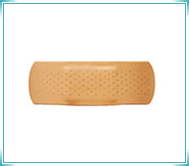 A wound may be defined as the interruption of continuity in a tissue, usually following trauma. Skin is the organ predominantly affected although any tissue, whether nerve, bone or internal organ, may be wounded.
A wound may be defined as the interruption of continuity in a tissue, usually following trauma. Skin is the organ predominantly affected although any tissue, whether nerve, bone or internal organ, may be wounded.
The aims of good care and management of a wound should include individual therapy for each patient and each wound. The patient should be treated holistically, as a person and not just a wound, meaning any co-existing disease, e.g. diabetes or rheumatoid arthritis, should be treated simultaneously. Pain relief may also be required because of infection or oedema. Eczema, infection and lymphoedema must be treated and the skin surrounding the wound cared for.
The cost of wound care products can be considerable, therefore the use of modern wound products can be more cost effective than traditional treatments.
Documentation of wounds and their care are particularly important. All wound care needs to be documented in the patient’s notes and photographed where possible.
Wound healing can be defined as the physiological process by which the body replaces and restores the function of damaged tissue.
– Flanagan 1997